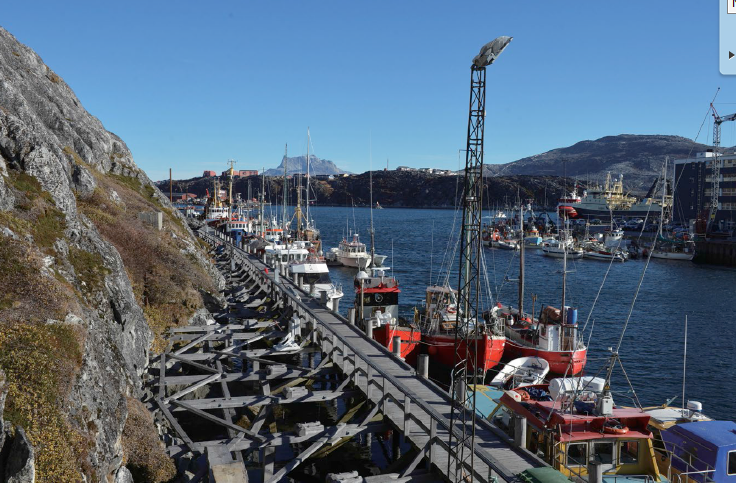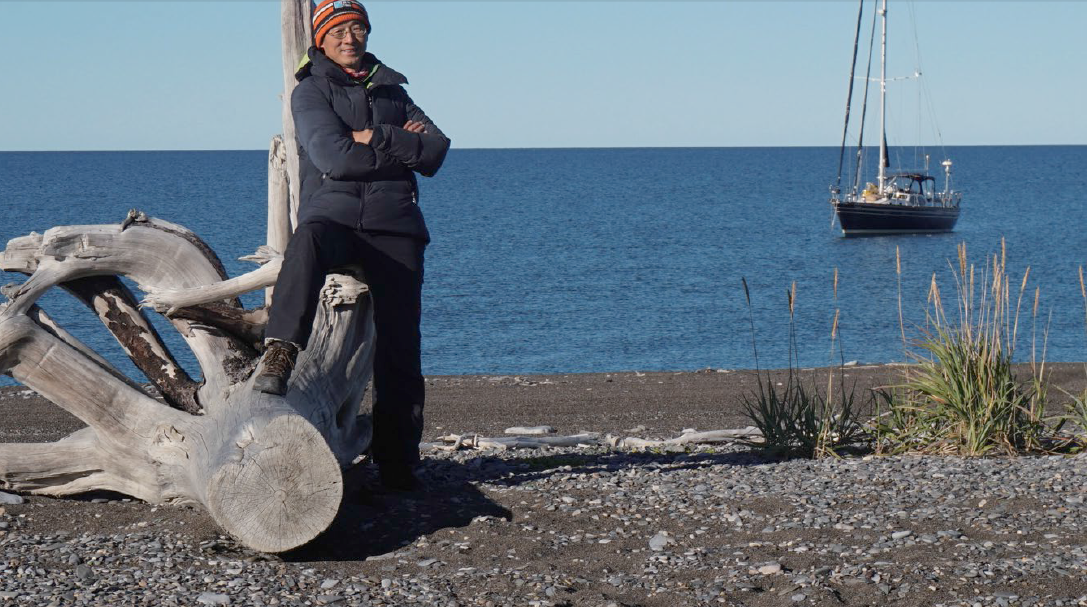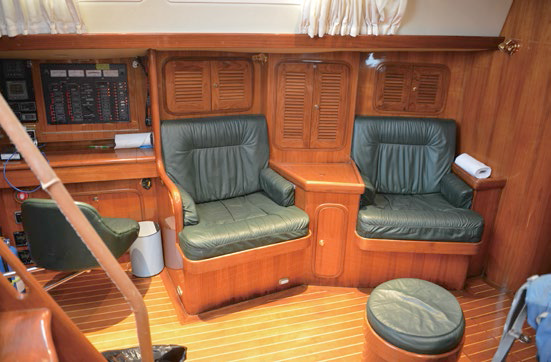After climbing mount everest, hong kong engineer and adventurer kee duen chu successfully sailed through canada’s infamous northwest passage. By Chermaine Lee.


After climbing mount everest, hong kong engineer and adventurer kee duen chu successfully sailed through canada’s infamous northwest passage. By Chermaine Lee.


AMID A CROWD OF short-tempered Hong Kong citizens and the ever-glitzing neon lights of fast-food shops, Chu Kee Duen possesses a sense of certainty that stands out – so much so that his passion, patience and perseverance have turned him from an engineer into a serial expedition goer.
The 53-year-old is the first Hong Kong Chinese sailor to make a successful voyage through the Northwest Passage in the Canadian Arctic, which has claimed countless lives of seafarers in the ancient times.
The youthful-looking Chu is brimming with tranquillity and humbleness that appear more on kindergarten teachers or missionaries than on a stereotypically ambitious and aggressive sailor.
Perseverance is nothing new to the engineer who started sailing dinghies only about a decade ago. His best friend, who also brought him to church when he was younger, introduced him to the sport.
Chu developed his target-oriented approach as a teenager while he was studying the Bible for three years to become a missionary. Though he chose not to follow that path, for Chu the expeditions are just other challenges and tests in a different disguise.
“This crucial concept [of persisting] had a very big influence on me. If I have this passion to climb and do marathon and offshore sailing, God’s will is on me. He uses to me achieve something I don’t know,” says Chu.
A six-month expedition from Hong Kong to the Mediterranean can be threatening to frivolous sailors, but not to the strong-minded with an adequate sports portfolio. A long-time marathon runner and a dedicated mountain climber, Chu always aims to do his best.
“I like challenges and I like to see how far I can go. In the past, I tried to do a personal best time for marathon. Then I started climbing snowcapped mountains. In 2009, I organised a team of 10 to climb. In two years, I tried climbing Mount Everest and we reached the top.”
Persistence in only one direction is not Chu’s style. Used to targeting several objectives simultaneously, the dreamer passed a Japanese language exam, professional tests and reached the fabled mountaintop at the same period.
His language ability proved to be useful during the April to October 2016 sailing expedition, where his sailboat Eagles Quest II voyaged from Hong Kong to Hokkaido before heading to the freezing Arctic waters.
Yearning to see the glaciers in the Arctic, Chu was confident in the 58ft bluewater Tayana sailboat bought in Hong Kong in 2014, which has a thick hull made of fibreglass to withstand the icy water. The engineer changed his job from five days to three days a week to gain more knowledge of the yacht and how to repair it.
Fully prepared in 2016, Chu brought three objectives with him on his yacht – to see the animals along the way, meet different people and view the glaciers in safety.
Unpredictability can be a life-and-death problem for many a sailor. Infamous for its hidden jeopardy, the Canadian Artic consists of a large amount of sea land, 60% of which has never been surveyed. The concerned organisation does not have sufficient funds to carry out investigation, so there is a recommended route for the passage. Yet with ice on the surface and strong winds, it is quite possible for the yacht to stray off the route.
“We were grounded this time because we sailed a direct route, lacking previous survey. We learnt our lesson,” explains Chu. The group encountered a stumbling block between Cambridge Bay and Gjoa Haven in Nunavut. Eagles Quest II floated again when the tide went up. The Canadian Coast Guard led them to safe water.





If this was the biggest challenge of the voyage, just entering the Canadian waters did not lack drama. The Canadian Border Service Agency demanded they sail to British Columbia before heading to the Canadian Arctic.
“If we did that, we had to spend at least half a month to sail from Dutch Harbour to Prince Rupert – the closest place. If it took that long, we would certainly miss the ice-melting period and the expedition would be over,” he says.
Hot debates followed on whether the yacht should go to other ports or head right into the Arctic no matter what. Chu found it rather risky to go 1,600 miles away to the dangerous region but some crewmembers insisted on going to the Canadian Arctic, otherwise they would leave immediately. Luckily, a novice sailor named Sarah contacted the officials and after a few rounds of handing in documents, they secured the permission to sail directly to the Arctic.
Geographical difficulties aside, it was not easy for Chu to recruit enough crewmembers to sail the Canadian passage route. From Hong Kong to Hokkaido, 27 sailors joined the voyage but only seven went on different sections of the later legs from Hokkaido to the Canadian Arctic. The group suffered short-handedness during the difficult long leg, not to mention the heated arguments about risks, timing, and at which ports they should stop.
“This is a very challenging task apart from the sea environment,” says Chu. “Sometimes I have to compromise. I am a person who is easy to compromise. If their [the crew members’] suggestions are viable, I won’t insist on my opinion. I let them go touring.”
Despite being grounded for a night, the Canadian Arctic did not cause as many problems as expected. With glaciers not reaching the sea, it appeared contrary to the map by Hong Kong writer/adventurer Cameron Dueck in his book The New Northwest Passage about the ice coverage that delayed him during his 2009 voyage. Chu believes that global warming is the culprit of the phenomenon.
“We could not meet the ice coverage he [Cameron Dueck] described,” he says. “He met about 30% of ice coverage and sometimes more… it was under 10% of ice coverage when we sailed there.”
Raising awareness about global warming is one of the potential initiatives for Chu’s next expedition, among some others in the making.
“I think we need to reduce fuel and gas consumption. I was usually the one to stop the engine onboard. For the time being, I just give messages to my crew on how to save diesel onboard and have some precautions to not to pollute the environment. Sometimes we had to sacrifice a bit on the speed and time in order to save energy. Some of our sailor friends went to different ports to raise the awareness of global warming and I would like to follow their footsteps. I need to put in more effort,” says Chu.


Environment aside, Chu also has a social initiative in mind for the 2017 expedition. “Whether I should sail or God has other jobs for me, I have this intention of bringing underprivileged young people to our boats.”
Giving up is not in Chu’s dictionary. Although he did not make it all the way to the Mediterranean last year and stopped in Ireland, he is determined to bring Eagles Quest II home.
After being back in Hong Kong less than a month, he is already planning a second expedition, which will start in April 2017 from Ireland and pass through the Suez Canal, the Somali waters, the Maldives, Indonesia and other Southeast Asian countries, and back to Hong Kong. The difficulties this time will not be limited to the weather conditions.
“I have problems recruiting enough crew members for the leg from Egypt to Somali waters because of the pirates there,” Chu admits.
When asked if the setbacks in the Northwest Passage deterred him from taking a long expedition again, Chu remained strong. “I crossed all the Passage and it was fine. We met two storms and two low pressures. The first storm was the worst and it lasted for 36 hours. This caused some damage to the yacht and we had a difficult time. I believe that’s the plan of God. I wanted to see big waves. We endured all these and we gained experience in high swells and strong winds,” says Chu.
This time, Chu and Eagles Quest II will be more prepared for the expedition. The sailor practiced sea anchoring for safety amid strong winds. The chart plotter and radar will be updated. He has added a modem to receive weather data by high frequency (HF) radio to reduce costs from overusing data on the satellite phone by unrelated tasks on the computer, when he receives emails pertaining to weather information.
With the growing popularity of working holiday schemes and emergence of start-ups, dreams are not just an extra task for us, but necessary to be realised and determine life’s meaning. Surpassing the difficulties of climbing Mount Everest and the sailing expedition, Chu shares his secret to success.
“A lot of people have lots of dreams and goals,” he explains. “When young people are trying to reach them, they might encounter a lot of difficulties on the path. But before looking into the details, most of the people will give up. In fact, they are not so difficult to reach when you look into the details.
“The first step is to start. The second is to check the details and take steps one by one to reach the destination. That needs persistence. We also need to know our strengths and weaknesses. Don’t be intimidated by the target and the difficulties.”























